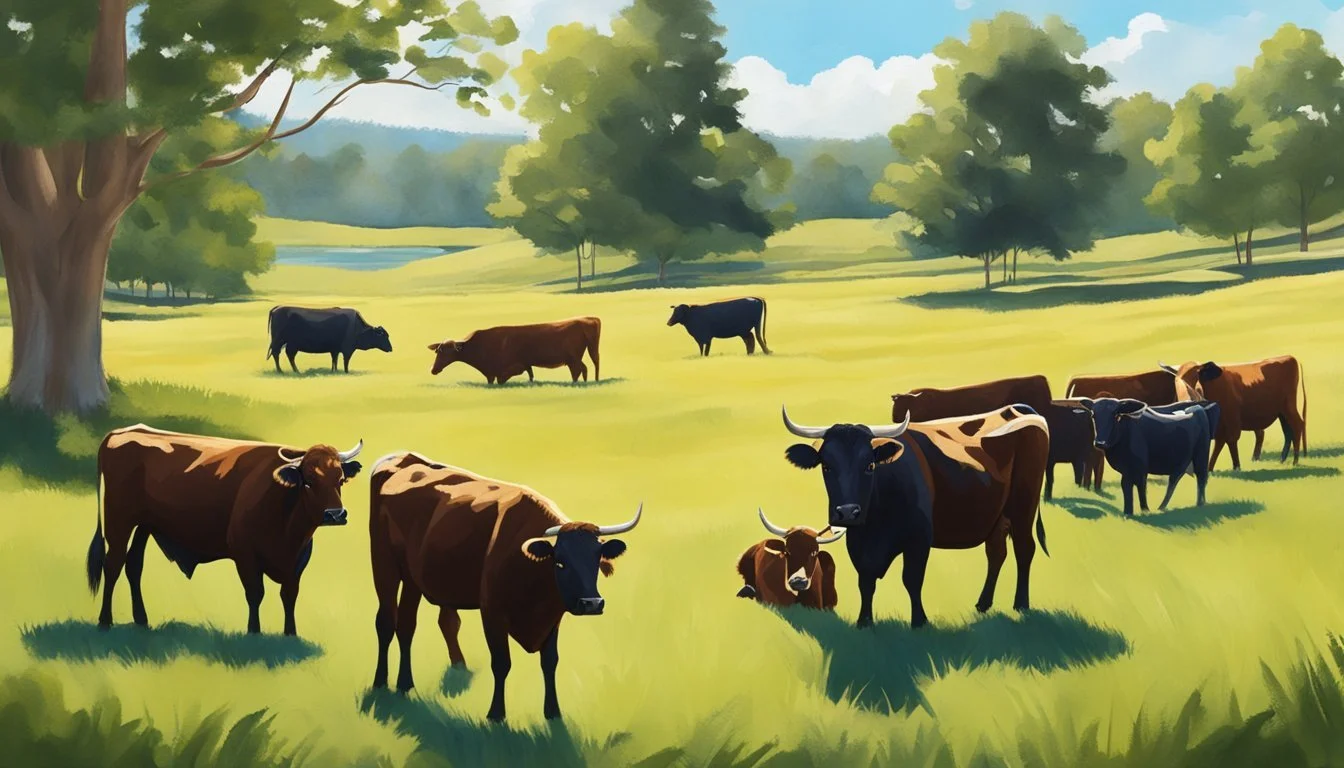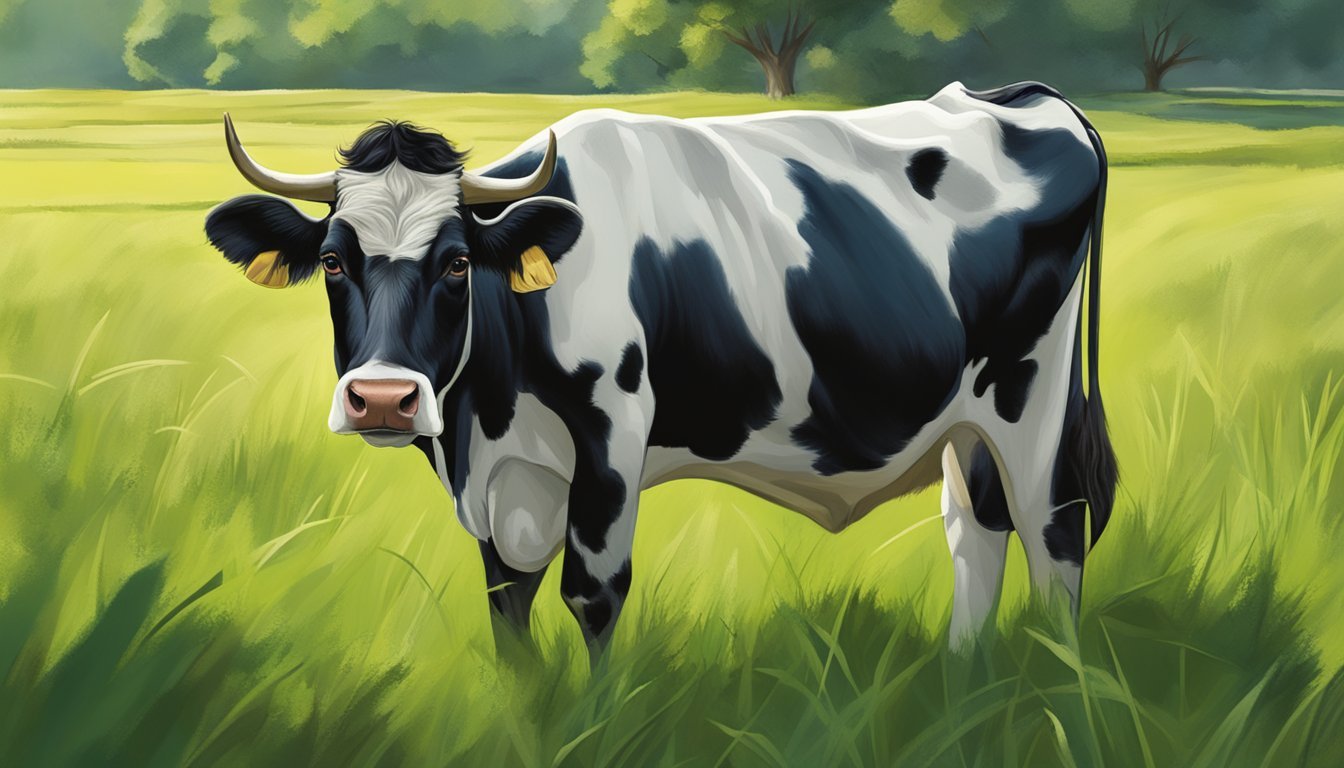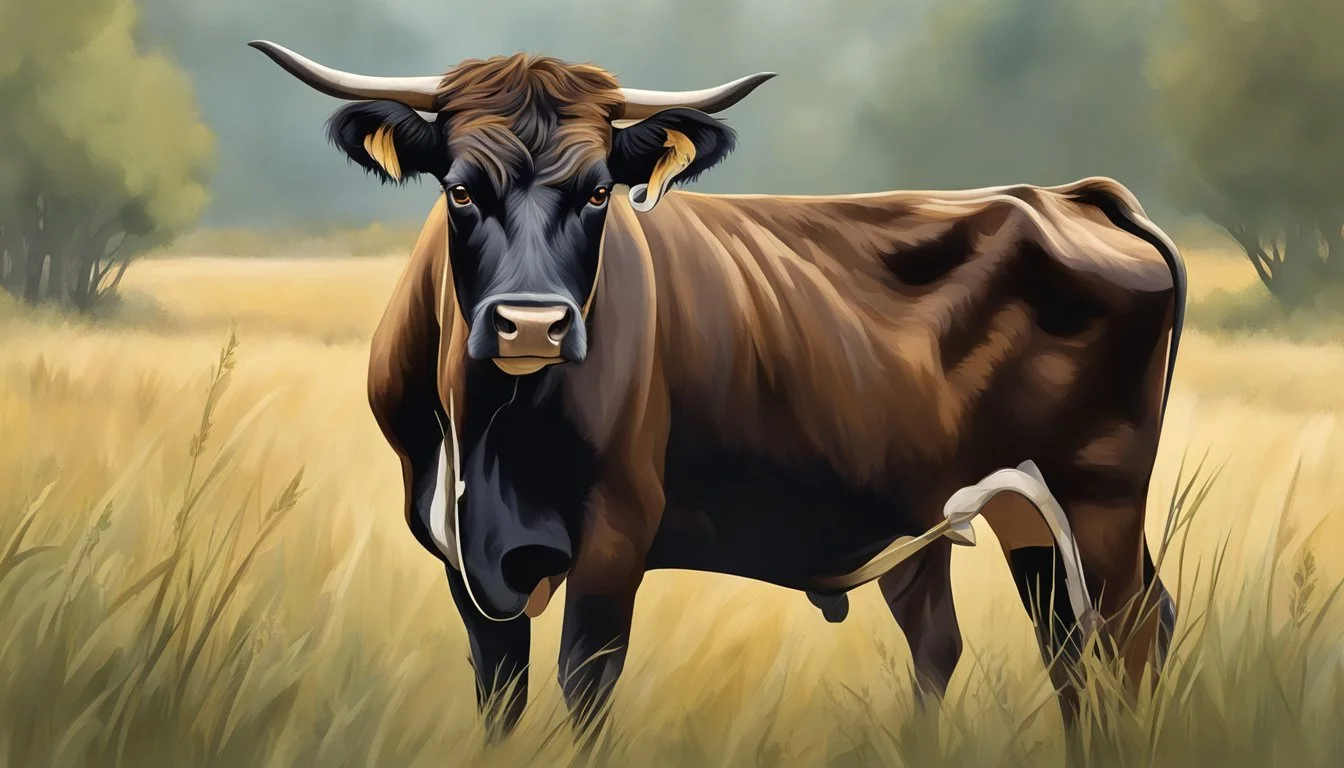Dexter Cattle Temperament
Insights on Behavior and Effective Management Strategies
Dexter cattle are widely appreciated for their docile and calm temperament, making them a favored breed among both seasoned farmers and novices. This temperament translates to ease of handling, which is particularly beneficial for families with children or beginners who may not yet have extensive experience with livestock management. Their cooperative nature allows for a smoother introduction to cattle rearing practices.
When managing Dexter cattle, one can expect a breed that is not only manageable in size but also even-tempered, reducing the risks associated with handling larger, more unpredictable breeds. These cattle are amiable and responsive to human interaction, often making them suitable for a variety of projects, including youth educational programs like 4-H where handling and care are key components of the learning experience.
Despite their small stature, Dexter cattle are robust, with a frame that supports a muscular build yielding a high meat conversion rate. Their dual-purpose nature is reflected in their capacity for both meat and milk production, a trait that adds to their practicality on a homestead. This combination of temperament, size, and versatility establishes Dexters as a breed well-suited for a broad spectrum of cattle owners and farming operations.
Origin and History
Dexter cattle boast a rich heritage that traces back to southwestern Ireland, with recognition and growth across America under dedicated associations.
Irish Roots and American Growth
Ireland: Dexter cattle find their roots in the early 18th century in County Kerry, located in Ireland's mountainous southwestern regions. Initially bred by small landholders, they required a versatile and manageable breed of cattle that could thrive on limited forage. These cattle are named after a Mr. Dexter who significantly influenced their breeding process.
American Influence: The breed crossed the Atlantic to the United States where it gained popularity for its compact size and efficiency. The American Dexter Cattle Association (ADCA) was established to preserve and promote Dexter cattle in America. The ADCA plays a crucial role in maintaining breed standards and providing a registry to ensure the purity and track the lineage of American Dexter cattle.
Conservation and Recognition by Associations
The Dexter Cattle Society: Based in the UK, The Dexter Cattle Society is one of the organizations dedicated to the welfare and propagation of Dexter cattle. Recognizing the breed's historical and agricultural significance, the society supports global conservation efforts through meticulous record-keeping and breeding guidelines.
Livestock Conservancy: Dexter cattle have also caught the attention of the Livestock Conservancy, a U.S.-based organization focused on protecting rare and endangered livestock and poultry breeds. Due to its efficient size and adaptability, the Dexter breed is valued for its contribution to biodiversity and sustainable farming practices.
In sum, Dexter cattle are deeply rooted in Irish history and have carved out their place in agricultural societies around the world, supported by organizations that recognize their unique qualities and conservation value among cattle breeds.
Physical Characteristics
The Dexter breed is distinctive for its smaller stature, robust build, and variety in coat coloration and horn status. These cattle are appreciated for their efficient size, adaptability, and the choice between horned and polled genetics.
Size and Conformation
Dexter cattle are among the smallest European cattle breeds. They exhibit solid conformation with:
Size: Adults stand approximately 36-44 inches at the shoulder.
Conformation: Characterized by a broad body and well-rounded hindquarters.
This breed shows chondrodysplasia, a form of dwarfism, which contributes to their compact size without significant compromise to their body proportions.
Coat Colors and Markings
Dexter cattle are primarily recognized in three solid coat colors:
Black: The most common color, ranging from a deep black to a softer black in some individuals.
Dun: A pale brown that can vary in shade.
Red: A less common but accepted color within the breed.
Typically, these cattle do not have white markings, maintaining solid color across their bodies.
Horned and Polled Varieties
The breed offers both horned and polled (naturally without horns) options:
Horned: Traditional Dexters often have horns which curve forwards.
Polled: Due to selective breeding, many Dexter cattle are born polled, which is a preferable trait for handling and safety.
Behavioral Traits
In considering the behavioral traits of Dexter cattle, their particular temperament and social structure are defining characteristics. Additionally, handling and training these animals demand certain considerations based on these traits.
Temperament and Social Structure
Dexter cattle are renowned for their docile temperament, making them a friendly addition to small-scale farms. They typically exhibit a calm demeanor, which contributes to their reputation as easy-to-manage livestock. Dexter cows are usually very motherly and protective of their calves, often forming close bonds within their social structure. The bulls, while generally calm, can become assertive during the breeding season, which is a normal trait of bovine behavior.
Handling and Training Considerations
When it comes to handling Dexter cattle, their manageable size is an advantage. Training these animals becomes smoother due to their docile and friendly nature, allowing for a variety of handlers to interact with them, including children and novice farmers. Nevertheless, it is crucial to introduce handling calmly and consistently, particularly with bulls, to reinforce positive behavior. Safe practices and respectful interactions build trust and ease the process for both cattle and handler.
Breed Utility and Adaptability
Dexter cattle are valued for their versatility as a dual-purpose breed, excelling in meat and milk production, and their remarkable environmental adaptation. They exhibit a level of hardiness that makes them suitable for various climates.
Dual-Purpose Nature
Beef: Dexter cattle are primarily known for their quality beef production. Despite their small stature, they have a high carcass yield with heavier muscling than one might expect from their size. This breed's beef has a rich flavor and is well-marbled, contributing to a superior eating experience.
Milk: Alongside beef, Dexters provide a moderate milk yield — typically producing 2-3 gallons per day. The milk is noted for its high butterfat content, which makes it ideal for cheese and butter production. Due to their dual-purpose nature, Dexter cattle stand out as a cost-effective breed for small-scale farming operations, contributing to both meat and dairy needs.
Environmental Adaptation and Climate Resilience
Climate Hardiness: Dexters are extraordinarily adaptable to various climates, thriving in both cold and warm conditions. Their origin in Ireland has endowed them with a genetic predisposition for resilience, making it possible for them to maintain productivity in different weather patterns and temperatures.
Breeding and Versatility: Their hardy nature extends to breeding, with cows being prolific breeders sometimes well into their twenties. The Dexter's overall versatility is further highlighted by its ability to thrive on pasture-based diets or when supplemented with grain, providing flexibility for owners in managing their herds according to available resources and conditions.
Care and Management
When managing Dexter cattle, one must consider their dietary requirements, monitor their health and wellness, and follow best practices for breeding and calving. This section addresses these critical aspects to ensure the well-being of Dexter cattle.
Feeding and Grazing Needs
Dexter cattle are efficient grazers that perform well on pasture and can be maintained on smaller amounts of feed compared to larger breeds. They thrive on a grass-based diet but also benefit from grain supplementation when necessary, especially during winters or for additional energy requirements. Managers should provide:
High-quality forage: A mix of grass and alfalfa hay during non-grazing seasons.
Access to fresh water: Clean and abundant water is essential at all times.
Supplemental feed: Grain or commercially available cattle feed to support their energy needs when pasture is insufficient.
Health and Wellness
Regular veterinary care is essential in maintaining the overall health of Dexter cattle. Some common health issues in the breed include:
Parasites: Control through deworming and pasture management is crucial.
Infectious diseases: Vaccination programs should be in place based on local veterinarian recommendations.
Owners should also ensure adequate shelter or windbreaks are available to protect the cattle from extreme weather, as Dexters are hardy and adapt to diverse climates.
Breeding Practices and Calving
Dexter cattle are known for their longevity in breeding, with cows being able to produce healthy offspring well into their advanced years. Optimal breeding practices include:
Understanding genetics: Selection of breeding pairs should aim to maintain or improve the breed characteristics.
Monitoring during calving: Even though Dexter cattle generally calve with ease, monitoring during this time can prevent complications.
After calving, good practices must be implemented to ensure both the cow and calf thrive, which contributes to the breed's reputation for quality milk production and beef production.
Economic and Homestead Value
Dexter cattle offer significant economic advantages and are especially beneficial for homesteaders seeking to maximize the utility of limited resources.
Productivity and Efficiency Considerations
Dexter cattle are celebrated for their high productivity rates. They are efficient converters of feed, requiring less pasture and grain than larger breeds, which translates into more meat per acre—a key factor for those managing smaller acreage. Typically, a Dexter can yield a meat conversion rate of more than 60%, compared to a dairy breed like the Jersey, which has a conversion rate of around 47%.
Furthermore, Dexter cows have prolific breeding capacities, often producing healthy offspring into their later years. Their size and productivity make Dexters a thrifty option for farmers interested in sustaining small herds with prudent resource use.
Small-Scale Farming and Homesteading Benefits
For homesteaders, Dexters are a perfect match due to their versatile nature and ability to adapt to various climates, thriving on either pasture-based or supplemented diets. Their small stature also means they require less feed, making them more cost-effective for homestead production.
Additionally, Dexter cattle are well-suited to small-scale operations due to their manageable size and generally docile temperament, which is ideal for handling and care by farmers of all experience levels. As such, they provide an accessible entry point for those new to cattle farming or who operate on limited acreage, maximizing the economic value of the homestead while conserving resources.
Culinary Profile
The culinary profile of Dexter cattle is distinct in both its beef and dairy products. Known for their quality meat and rich milk, Dexters provide a dual-purpose advantage in a smaller, sustainable package.
Dexter Beef and Meat Quality
Dexter beef is highly regarded for its fine marbling and tender texture, contributing to its reputation for high-quality beef. Despite their small size, Dexter cattle produce a meat that is lean yet well-marbled, a balance sought after by chefs and gourmet enthusiasts. They are considered a premium beef breed, offering a meat that is both flavorful and tender, making it suitable for a variety of culinary preparations.
Marbling: Dexter beef marbling is finer when compared to larger breeds, enhancing the meat's flavor and tenderness.
Meat Texture: The beef is recognized for its tenderness, which is a result of both breed characteristics and the smaller muscle fibers.
Milk Characteristics and Dairy Potential
Dexter milk is notable for its high butterfat content and richness, which makes it excellent for dairy production, particularly for cheese and butter making. The milk yield of Dexters may be lower than larger dairy breeds, but the quality of the milk is often higher in terms of dairy-specific nutritional components such as protein and butterfat.
Butterfat Content: Typically ranging from 3.5% to 4.5%, which is higher than many dairy breeds.
Protein Levels: Dexter milk is also valued for its protein content, which is essential for the production of quality dairy products.
Dexters are considered an exceptional breed for those interested in both beef and dairy, as they offer high-quality meat and rich, nutritious milk on a smaller, more manageable scale.
Challenges and Considerations
While Dexter cattle boast a number of benefits, such as a manageable temperament and small size, there are important challenges and considerations to factor in before undertaking their care.
Potential Drawbacks and Limitations
Advantages of Dexter cattle include their longevity and calm demeanor which make them suitable for beginners and families. They have a lifespan that often exceeds 20 years, implying long-term commitment and potentially extended productivity. However, despite these traits, their small size can be a disadvantage for those seeking higher yields of beef or milk compared to larger cattle breeds.
Their compact stature requires less space and pasture, which is beneficial for smaller farms, but one must consider whether the smaller yields meet their operational needs. Moreover, longevity brings about veterinary costs associated with older animals, including chronic health conditions that may arise as the cattle age.
Legal and Regulatory Aspects
Legal considerations are critical when raising Dexter cattle. Prospective owners should be aware of:
Local Zoning Laws: Regulations may dictate the number of animals per acre and the type of structures required.
Livestock Permits: Some areas may require permits or impose restrictions on the keeping of livestock.
Health and Safety Regulations: Owners must comply with standards to ensure the welfare of their animals and the safety of the food products derived from them.
It's imperative for potential Dexter cattle owners to thoroughly research and comply with all applicable legal and regulatory requirements to ensure the responsible and lawful management of their livestock.
Conclusion
Dexter cattle are an exceptional breed for small-scale farming and homesteading due to their manageable size and agreeable temperament. Summary: They are recognized for being docile and easy to work with, which bodes well for both novice and experienced farmers. The breed's compact stature translates to a smaller footprint on pasture lands and decreased feeding costs without sacrificing meat yield.
Breed Overview:
Size: Small, less land and feed required
Temperament: Gentle and calm, ideal for families
Utility: Dual-purpose, providing both meat and milk
Longevity: Capable of breeding into their 20s
Final Thoughts: Those interested in sustainable agricultural practices will find Dexter cattle to be a viable and responsible choice. Their gentle nature also makes them suited for educational projects that involve younger individuals, such as 4-H programs. It's clear that this hardy breed, with its dual-purpose utility and friendly disposition, offers a versatile option for diverse farming needs.
In handling Dexters, their temperament allows for a less-intensive management style. However, as with any livestock, proper care and handling practices are still essential for maintaining herd health and welfare. Prospective owners should remember that every animal is an individual, and while the breed has many favorable traits, attention to the specific needs of each Dexter is crucial for ensuring a harmonious farm environment.










